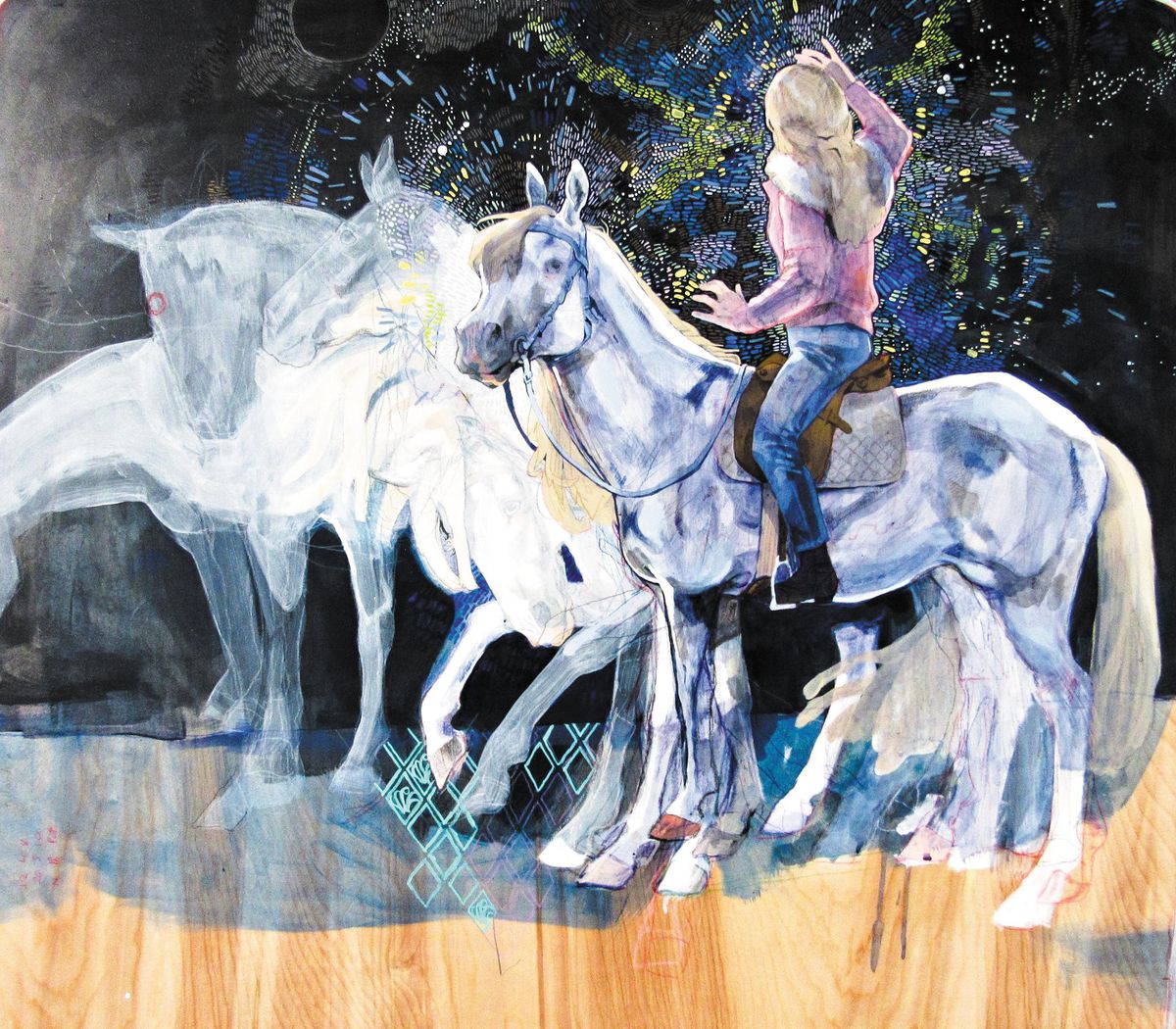
In the artist statement for her current one-woman show at 1078 Gallery, Mariam Pakbaz says, “Even though the Camp Fire smoke blew away physically, it’s still in my mind.” Although not all of the 20 pieces for the show were made after the wildfire, it’s easy to connect the whole collection of works in Something Not Yet Made to last fall’s life-changing event.
Billows of smoke and ghostlike figures of young women and animals present a familiar story and take center stage in most of the mixed-media-on-wood-panel pieces. In “Longinquity II,” a young girl astride a horse on a nighttime ride offers her back to the viewer, her attention on the cerulean and chartreuse tapestry exploding in the sky in a pattern not unlike the style of Austrian painter Gustav Klimt.
And while the rider is preoccupied, the horse morphs into a ghost, bringing to mind all the animals that perished in the wildfire. And those blue and green explosions? Were those Pakbatz’s reflection of all the propane tanks that turned into bombs?
Pakbaz manipulates her medium to render a transparent watercolor effect, unafraid to let the wood grain peek through or be completely exposed, as in “Hope and Spring.” In the piece, a deer pokes through a cloud of smoke, with greenery serving as its headdress, in the middle of an otherwise naked wood panel. Amid Pakbaz’s ghosts and dancers moving through the haze, this piece’s hopeful scene offers the promise of a restorative future.
Over at the Chico Art Center, the recently opened Uncovering a Resistance exhibit features works by Kyle Campbell, Oni Dakini, Gini Holmes and Ryan Ramos, four local artists with “limited exposure” united under one theme. As juror Jacob Meders put it in his show statement, it’s “art as resistance or as artists having critical conversations with their community.”
Through Dakini’s expressionist palette of mixed-media on canvas, a woman stares out from “Dakini Dances,” defiant and tough, with a poignant wariness and surrounded by flora, snakes, skulls and other female profiles. In the center, a collaged scrap with an explanation of the symbolic nature of the sacred dakini female spirit is juxtaposed with a plain scrap with a penciled rifle, offering a contradiction of color and imagery.
In “Briefcase Full of Guts,” Campbell has placed a dozen white lead-crystal hand grenades in a protective black case, deeming them a precious commodity despite their deathly impact. And in “Fortifying the American Dream (Gates),” he has four powder-coated cast-iron picket fences suspended by ceiling wires, raising this symbol of life’s success beyond the grasp of many.
Ramos’ finely drawn colored pencil on paper “Amor” offers a tongue-in-cheek rendering of a Mexican man whose come-hither look beckons from underneath a blue sombrero.
Lastly, Holmes voices her take on women’s issues and politics in “Three Jobs.” For the piece, she has embroidered over a heat-transferred image on handmade paper and then attached it to a dinner plate for a multitextured effect. The image is of a woman working in a field from an 1888 etching, “The Portionless Girl,” and it’s encircled with a quote from a comment former President George W. Bush once made to a divorced Nebraska mother of three: “You work three jobs? … [t]hat is fantastic that you’re doing that.”
Sarcastic? Oh, yes. And an effective example of pointed resistance.
